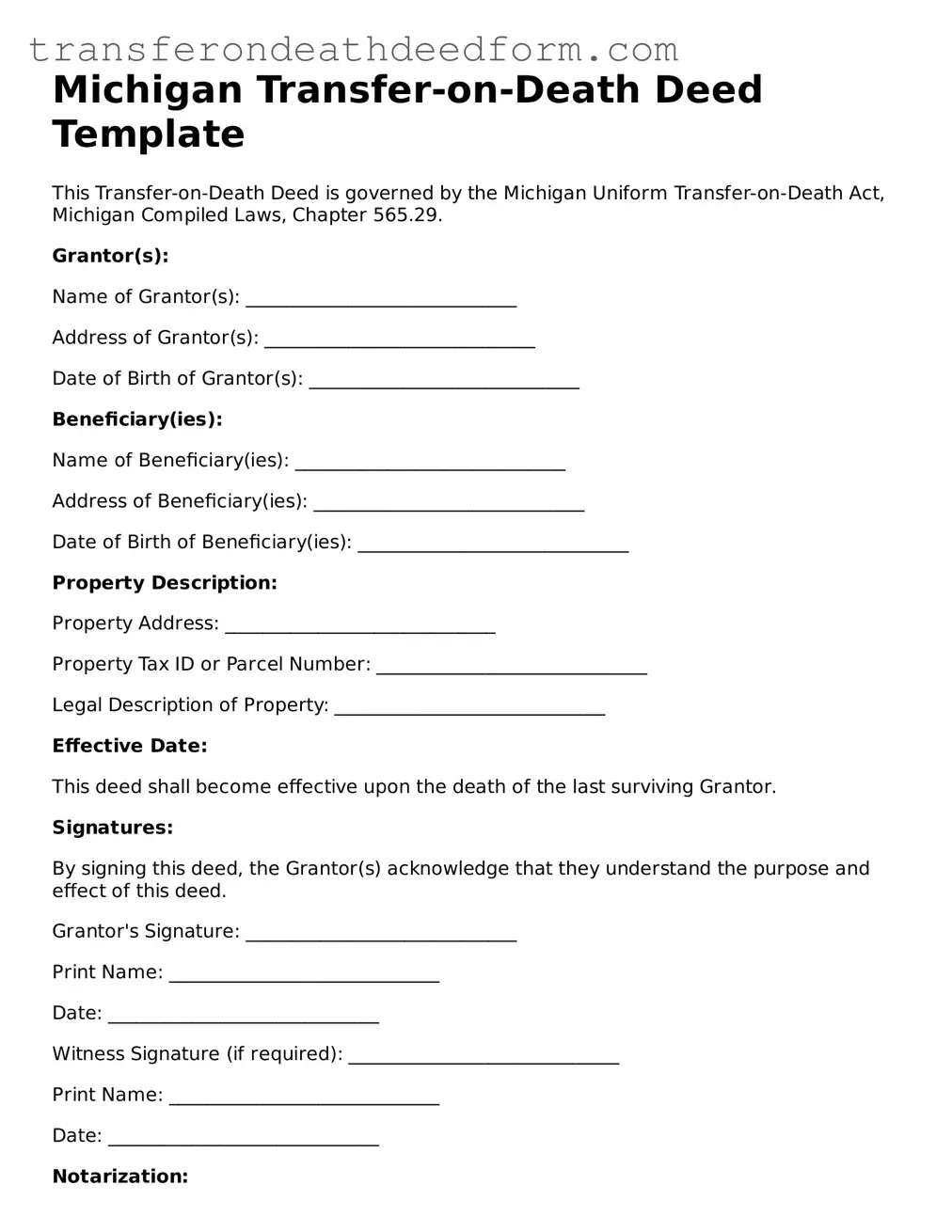Michigan Transfer-on-Death Deed Template
This Transfer-on-Death Deed is governed by the Michigan Uniform Transfer-on-Death Act, Michigan Compiled Laws, Chapter 565.29.
Grantor(s):
Name of Grantor(s): _____________________________
Address of Grantor(s): _____________________________
Date of Birth of Grantor(s): _____________________________
Beneficiary(ies):
Name of Beneficiary(ies): _____________________________
Address of Beneficiary(ies): _____________________________
Date of Birth of Beneficiary(ies): _____________________________
Property Description:
Property Address: _____________________________
Property Tax ID or Parcel Number: _____________________________
Legal Description of Property: _____________________________
Effective Date:
This deed shall become effective upon the death of the last surviving Grantor.
Signatures:
By signing this deed, the Grantor(s) acknowledge that they understand the purpose and effect of this deed.
Grantor's Signature: _____________________________
Print Name: _____________________________
Date: _____________________________
Witness Signature (if required): _____________________________
Print Name: _____________________________
Date: _____________________________
Notarization:
State of Michigan
County of _____________________________
Subscribed and sworn to before me this ___ day of ____________, 20__.
Notary Public Signature: _____________________________
My Commission Expires: _____________________________
